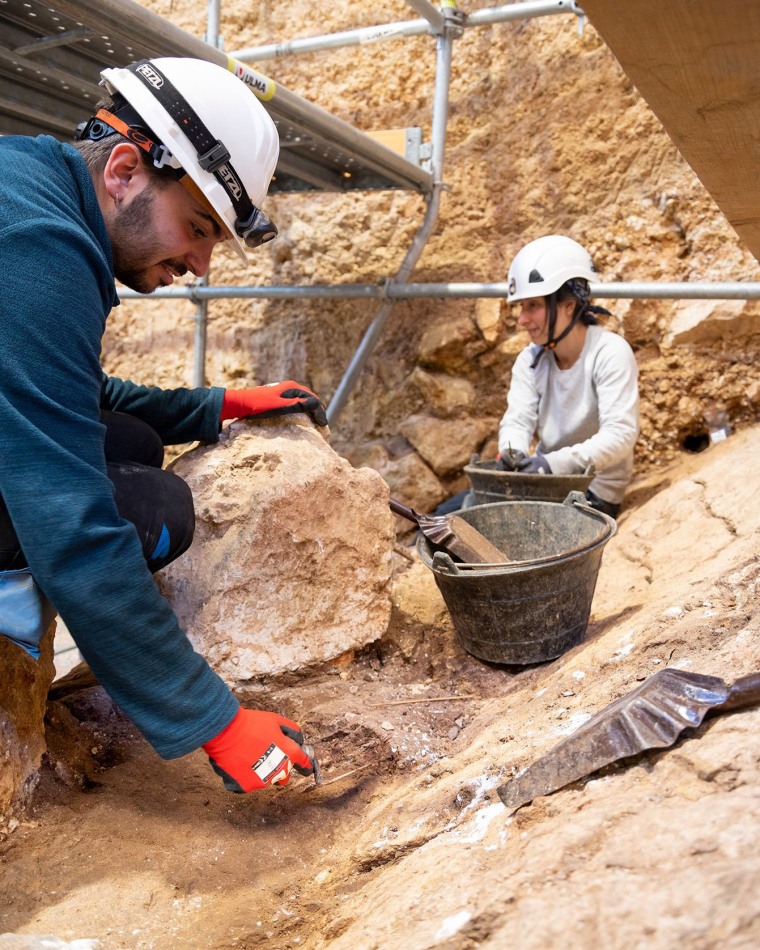A 1.4 million-year-old fragment of fossilized skull could provide a new understanding of how the human face developed, a team of paleontologists has said.
The fossil, a piece of jawbone belonging to an ancient ancestor of homo sapiens and possibly the oldest archaic human fossil found in Europe, was found in the Atapuerca Mountains in northern Spain on June 30.
Download the NBC Newsapp for breaking news and politics
The fragment — discovered by a doctoral student, according to the Atapuerca Foundation, a non-profit that runs the site — is thought to be older than the remains of a species named homo antecessor, or pioneer man, that was found in a nearby cave at Atapuerca in 1997 and was thought to be 850,000 years old.
Experts believe the new find announced on Friday is related to a fragment of jawbone which was found a few feet away at the same site in 2007 that dates back 1.2 million years, but was not classified as any particular species due to a lack of evidence.
“The first days of the month of July 2022 will be part of the history of the field of human evolution,” the Atapuerca Foundation said in a statement.
After much cleaning and analyzing, the team concluded that the fossil, found at a site called Sima del Elefante, or elephant chasm, corresponds to a human upper jaw and belonged to an archaic human — among the first hominins to travel to Europe from Africa.
“The excavations at [level 7] of the Sima del Elefante cave site have surprised us with an exceptional find. It is the partial face of a human being, whose age may be around 1.4 million years,” the statement said.
Excavations in Atapuerca were started by caving enthusiasts in the 1950s, before systematic digs in the 1970s found a series of key fossils. The team still excavating the area now consists of nearly 300 experts from 22 countries across 30 scientific disciplines.

The findings have yet to be published in any peer-reviewed format.
There is an ongoing debate among scientists about when in evolutionary history the modern face emerged.
“We will have a unique opportunity to advance in the answer to this question,” the foundation said.
Further work is being done to analyze stone and plant matter, to get a better understanding of the climate in which the first European settlers lived.
The Atapuerca project seeks to answer controversial questions surrounding the study of hominins — a group including humans and our extinct ancestors — such as how and when early human forebears moved from Africa to colonize Eurasia.
Homo sapiens are the last surviving members of the human lineage, homo, which dates back about 2 million years. But there were once several and about 400,000 to 500,000 years ago some of them split from groups living in Africa and came to Eurasia where they developed characteristics associated with our short, stocky cousins, the Neanderthals.
www.nbcnews.com
George is Digismak’s reported cum editor with 13 years of experience in Journalism